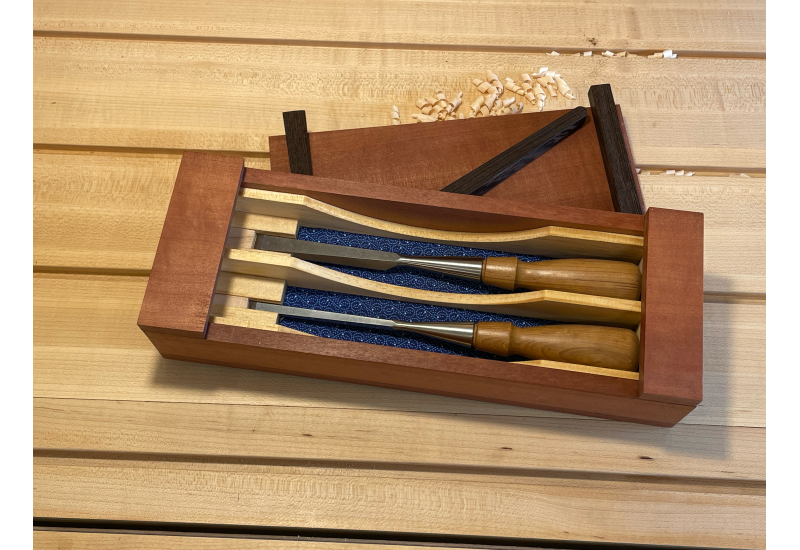One Plane to rule your woodwork?
It is a constant request for advice, “if I were to buy just one plane when starting, which would that be?”
So, to answer this question, it is not a simple statement of “choose this plane,” add some justification for the features it offers, and there you go,” which will all be true but may not be appropriate to the task.
And therein lies the rub: Woodworking is task-driven. By that, I mean building anything from a small box to a full kitchen requires multiple steps (tasks) to construct any project. Each task has to be completed with a degree of accuracy for the following step to be successful.
And I know you are saying “Well heck, way to state the obvious!” However, keep the above in mind as you read on.
To get back to the question, the most often suggestion by sundry information paths is that the Low Angle Jack Plane is the answer. Well, it may be, if you are an accomplished woodworker, it will surely answer many difficult tasks, but (and I am sorry to disappoint) for the novice woodworker it will not end well.
So now you are asking “Why?” And fair enough.
First, though, I will claim that our low-angle jack plane is a fantastic product, it is a large block plane with an adjustable mouth, a thick blade, a bevel facing up, and a 12-degree blade bed angle, like pretty much all the current makers of block planes use today. These attributes accomplish one important function, to dampen vibration by ensuring the blade does not flex while in the cut, meaning no chatter marks or tear out, at the start of a cut, after a knot, or through the curly grain, it is a fantastic shooting plane as its attributes are perfect for end grain. The ability to alter the micro-bevel on the blade from 30 degrees up to 90 degrees is an extension of this function. (Please note that if there is vibration, cutting tools will not cut, (it is a simplification but true nonetheless). So the Low Angle Jack does sound perfect.
Therefore, should the Low Angle Jack Plane be the one plane? The short answer is maybe not.
The multiple tasks necessary to build any project mean one plane will never be enough, but, if you insist you can only have one, the answer is as a novice, this plane will frustrate you. Its abilities come with a disadvantage.
Set-up and adjustment are slow because block planes are designed to set and forget, allowing very fine shavings until they are blunt then resharpened and reset. This serves well for this specialist tool, but for general work throughput, it will frustrate even the accomplished, and the reason is two-fold.

First, when making some mating wedges, (see left; two wedges that are face to face through a beam mortise), bandsaw cut where the faces are flattened perfectly to work properly. A Low-Angle Jack Plane will be too fine a cut, and if you deepen the cut to speed up the work you will have to stop and adjust and set the blade back again as you near the marked lines.
This brings us to the second issue, sharpening where slow set-up and adjustment of the blade can impact your workflow because the design of the plane does not allow the set-up and adjustment configuration to be retained, important if you have 20 pairs of these mating wedges to make, the job becomes laborious if you have to re-sharpen often.
In a standard bedrock bench jack plane, pictured below, where a mounting frog is inserted, you can adjust the cut finer as you work, with an adjuster nut in front of the handle this allows speedy work and greater control as you approach your marked lines, the frog also allows the blade to be removed for sharpening while retaining the settings you require.
 Of course, none of this is definitive, as the Bench Jack Plane is more expensive than the Low Angle Jack, and this may be the difference for you, if it is a bespoke one-off piece being made, being a bit slower is perhaps irrelevant, but if you want one plane to start, and you are new to the craft a standard bench plane will probably serve you best be it a No 4, No 5, No 5 1/2. It will teach you when it reaches its limits and when you may want the other planes to continue.
Of course, none of this is definitive, as the Bench Jack Plane is more expensive than the Low Angle Jack, and this may be the difference for you, if it is a bespoke one-off piece being made, being a bit slower is perhaps irrelevant, but if you want one plane to start, and you are new to the craft a standard bench plane will probably serve you best be it a No 4, No 5, No 5 1/2. It will teach you when it reaches its limits and when you may want the other planes to continue.



